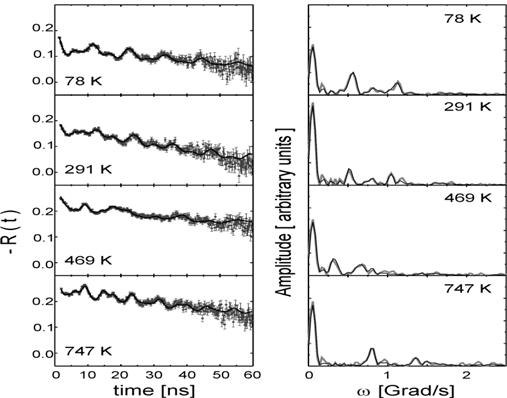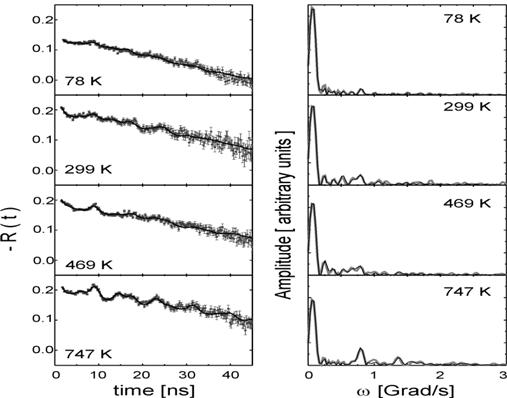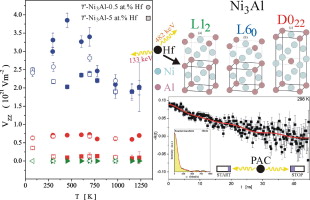A- Perturbed angular correlation of gamma rays (PAC)
-For more than 50 years present research in INN Vinča

Source, usually 180Hf(n,γ) 181Hf→β-→ 181Ta
PAC Methodology

First results:
1976-2000, Magnetic and electric hyperfine fields in solids
1989-1992, Defects in metals and semiconductors
1985-2008, Diffusion and dynamic processes
2008- 2011, After effects and relaxations
Possible new directions
Defects and impurities in modern semiconductor technology-group III-Nitrides, ZnO, magnetic effects in semiconductors, HfO2, etc
Time dependence of the interaction through fluctuation fields due to jumps of the probe or other constituents of the material
Time dependence of the interaction due to recovery(after) effects in the electron shell of the probe. Could be linked to conductivity of the material:
conductivity of insulators free of surface effects etc.
coherent electron tunneling at low temperatures
B-3 BaF2 γ-γ coincidence spectrometer

Block diagram of the three-BaF2 detector TDPAC spectrometer
C-Samples
Intermetallic compounds and alloys ;
Laves phases
Heusler alloys
Semiconductors
Superalloys
Line compounds
Magnetic and Ceramic Nanocomposites
Others
D- Measuring room

E- Spectrum acquisition software


F- General areas of application of PAC include:
– Structural and magnetic phase transitions
– Static and dynamic critical behavior and exponents
– Magnetism: spin dynamics, stability of atomic magnetic moments in different hosts, exchange interactions
– Diffusion and other atomic movement in solids, dynamical interactions detected via nuclear relaxation
– Surfaces, interfaces and grain boundaries, thin films, nanocrystals
– Point defects: identification, thermodynamic properties, interactions,
– Point defect production by plastic deformation, radiation and implantation damage, and quenching
– Lattice location of impurities in compounds
in
Condensed Matter Physics
Chemistry
Materials Science
Physical Metallurgy
Biology
G-Where is it used today

For more information refer to Božidar Cekić and/or Ana Umićević
H-References:
1. A.Umićevič, B.Cekić, V.Ivanovski, J.Belošević-Čavor, M.Šiljegović, S.Pavlović
Magnetic dipole and electric quadrupole interactions of 181Ta probe in Ni-Hf alloy
Journal of Alloys and Compounds, 475 (2009) 38-41

2. B.Cekić, A.Umićević, V.Ivanovski ,V.Koteski, J.Belošević-Čavor, S.Pavlović
The TDPAC study of the Ni-5at% Hf alloy
Journal of Alloys and Compounds, 480 (2009) 40 – 42

PAC spectra of 181Ta probe in the nickel – 5 at.% hafnium alloy and their corresponding Fourier transforms
(grey line – data, black line – fit).
3. V.N. Ivanovski, B. Cekić, A. Umićević, T. Barudžija, G. Schumacher, I. Mađarević, V. Koteski
Site preference of Hf dopant in Ni3Al alloys: A perturbed angular correlation study
Journal of Alloys and Compounds, Volume 622, 15 (2015) 541–547
